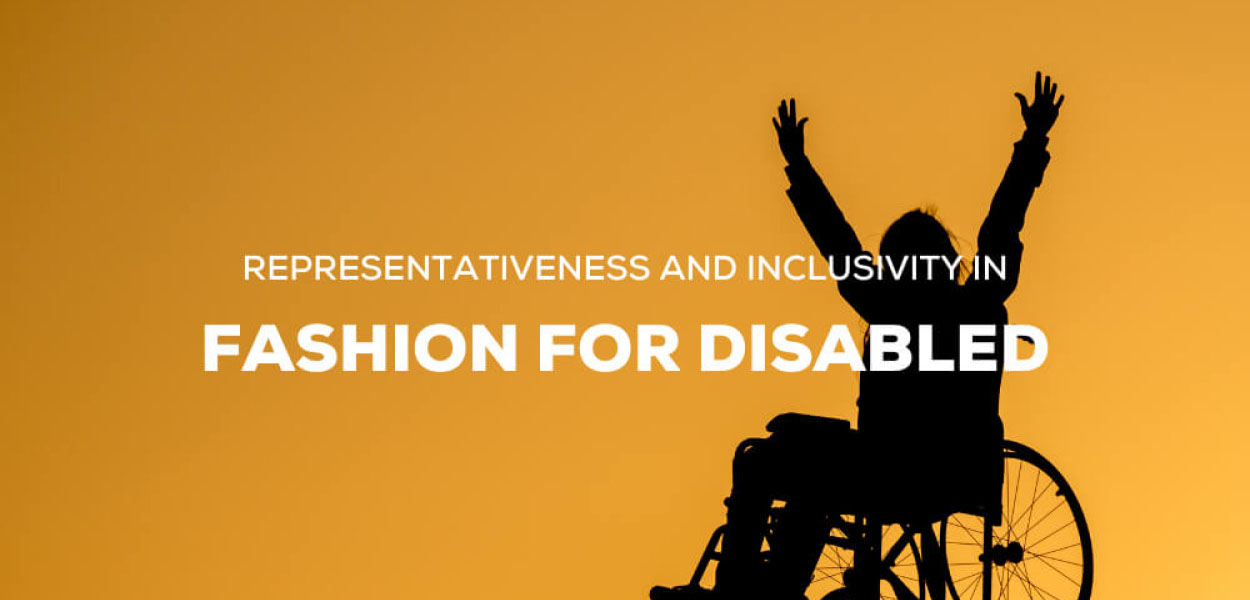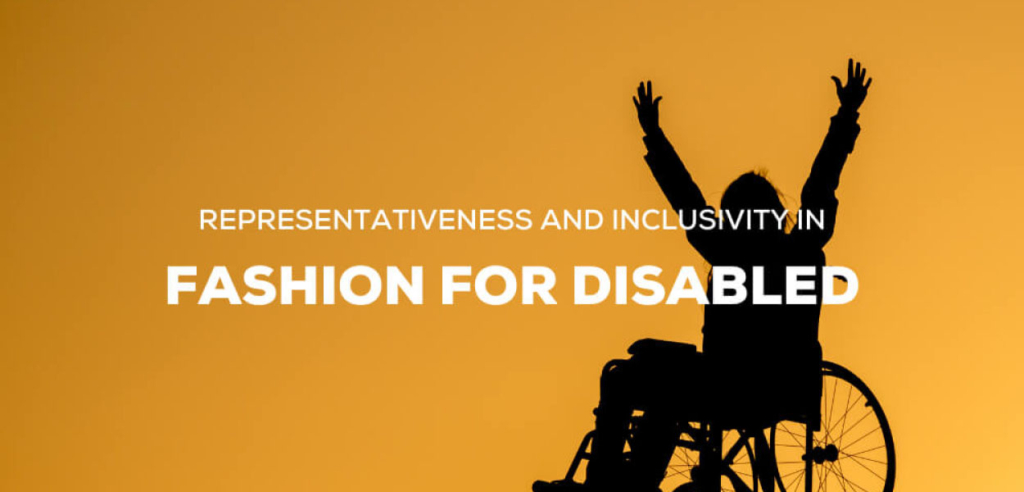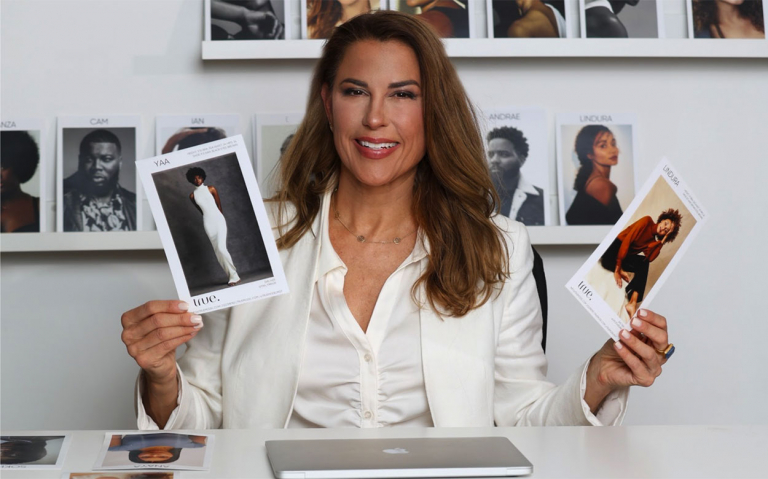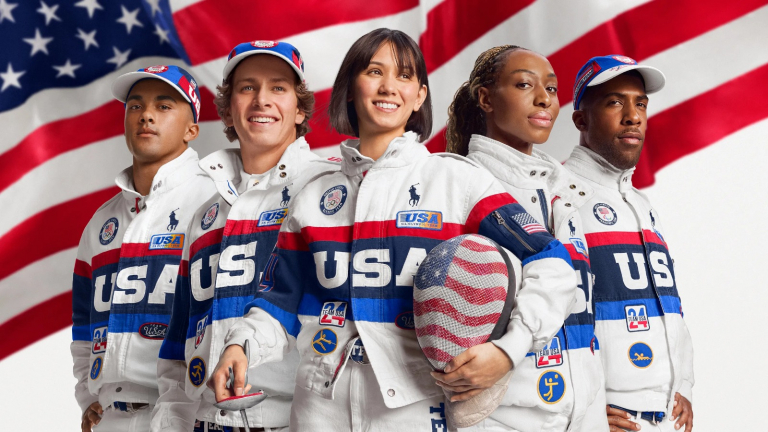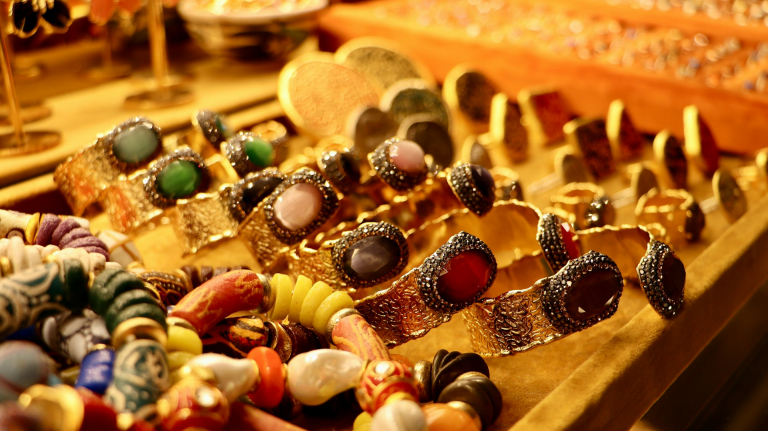“I have never been to a store with an accessible fitting room. Every time I want to try something before buying it, it is a big constraint”. Those are the words from Simone Albuquerque, a disabled social worker who loves colorful accessories. This is just one of many issues people like Albuquerque have to deal with daily when it comes to fashion for the disabled.

According to The World Bank, 15% of the world’s population experience some form of disability. That corresponds to one billion people. One-fifth of the estimated global total, or between 110 million and 190 million people, experience significant disabilities.
As we can see, the number of people with disabilities is representative. So, how is it possible that, even so, most brands do not think of them when making their products?
Fashion for Disabled: They Also Need and Like Clothing
Last year, the New York Times released an article by Keah Brown. The author says that “disabled people, including the fashion plates among us, have always had to make wardrobe hacks to navigate features like zippers, buttons, shoes and irritable fabric tags”. And why? Simply because most brands don’t think of them when making clothing, accessories, and products in general.
Since dressing is something everyone does, it should therefore be considered a basic right. This means that, regardless of the body size, skin color, or whether there is a disability or not, dressing is an essential right that should be at the minimum be guaranteed. However, the problem goes beyond that. If it is a basic right, why does the industry not think about the plurality of people out there? After all, they are consumers, so there’s a market for it.
To sum it up, as stated by Luana Dias, a journalist who works with social impact marketing, talking about inclusive fashion sounds redundant. “Fashion itself should be inclusive. It shouldn’t have a term for it or a specific part of fashion that suits us. Having to use this inclusion term means that we are still a long way from having this basic right guaranteed”, she pointed out.
Within the capitalist system destined to homogenize people, it makes sense that the fashion industry does not think about the individual need of each person. Today, thanks to advances in this type of discussion, some brands are beginning to rethink their practices. An example is Tommy Hilfinger that created the Tommy Adaptive, which delivers more effortless dressing for people with disabilities. Meanwhile, other brands are already appearing offering inclusive, functional and differential products focused on fashion for the disabled. Feeling good, stylish, and comfortable with clothes is important to everyone. It is related to self-esteem, self-confidence, and identity.
Difficulties Disabled People Have to Deal With
Disabilities out there are multiple. That means that different people have different disabilities and, in consequence, different necessities. Therefore, they face different difficulties. We’ve talked with seven people, with different disabilities. They pointed out some of the struggles they have to deal with when shopping, dressing and using beauty products.
- Most labels and tags don’t come in braille, which means that people with visual impairments cannot read them;
- Dressing rooms in stores are not adapted to the various disabilities out there. As Albuquerque said, buying new clothes can become a nightmare and an embarrassing time when doing something common for most people, such as trying on clothes before taking them home;
- Shopping, in general, can be hard for people with disabilities, either going in person to the stores or online. Most websites are not adapted and when visually disabled people try to use them with their computer resources the website is also not compatible with screen readers, inclusive apps, etc. Another problem is that many stores do not describe the products very well, which makes this search even more difficult;
- Accessible, functional, and inclusive clothing can’t just be a season collection. Some brands launch a line of clothing that is sold for a while and then despair from stores;
- Clothing size. Different disabilities make different people, which means different body types and sizes. People with dwarfism, for example, usually find clothes only on the children’s part. But what about style? What about personal identity? Not necessarily only because a person is small, means that they should wear children’s clothing. Discussions about plus size are emerging and becoming significant and that’s legit. But we can’t forget about small sizes, too;
- Difficulties with accessories in general. The majority of earrings, necklaces, and bracelets are not easy to put on. There are several alternatives such as the use of a magnet in the clasps, bras that facilitate placement, but, unfortunately, they are not always easy to find and, in most cases, they are more expensive.
Diversity and Inclusivity: Two Different Fights That Need to Come Through
Diversity and inclusivity are common words that show up when talking about fashion for the disabled. But, it’s essential to understand what they mean and how can they help.
Diversity is when society, industries, and individuals understand and respect that people have their unique aspects, looks, and personalities. Differences must be normalized and treated as a positive, after all, those characteristics are what make everyone singular and special.
On the other hand, inclusivity is when everyone’s diversity is embraced. Therefore, people feel part of the whole. In other words, as stated by Luana Dias, being inclusive means “recognizing that differences exist. So, make use of them to build a journey that unites and contemplates everyone, instead of segregating”.
As she said, to solve this problem the best option is to work with the intersection of both. So that, diversity promotes inclusivity and vice-versa.
Disabled People and The Lack Of Representativeness in The Industry
Representativeness is a big issue in the fashion industry. The system tends to minimize people’s differences in others to produce massively. Due to discussions and the rise of movements that promote awareness of representativeness, the fashion industry is now paying more attention when it comes to bringing disabled people into catwalks, propaganda, and clothing lines.
Ellie Goldstein is an inspiring example of that. The model was the first person with Down to star in a major brand campaign. She has been in a lot of fashion magazine covers including Glamour’s September 2020 edition, showing everyone that disabled people can do whatever they want.
Still, there’s a long way to go to have representativeness that includes and makes disabled people part of the fashion industry. With social media, people can express themselves, show their realities, and build connections that raise a supportive community.
Influencers that talk about disabilities are amazing examples as well. They are not only helping to raise awareness among the industry but also bringing up important discussions.
Meet Elin and Her Blurred World
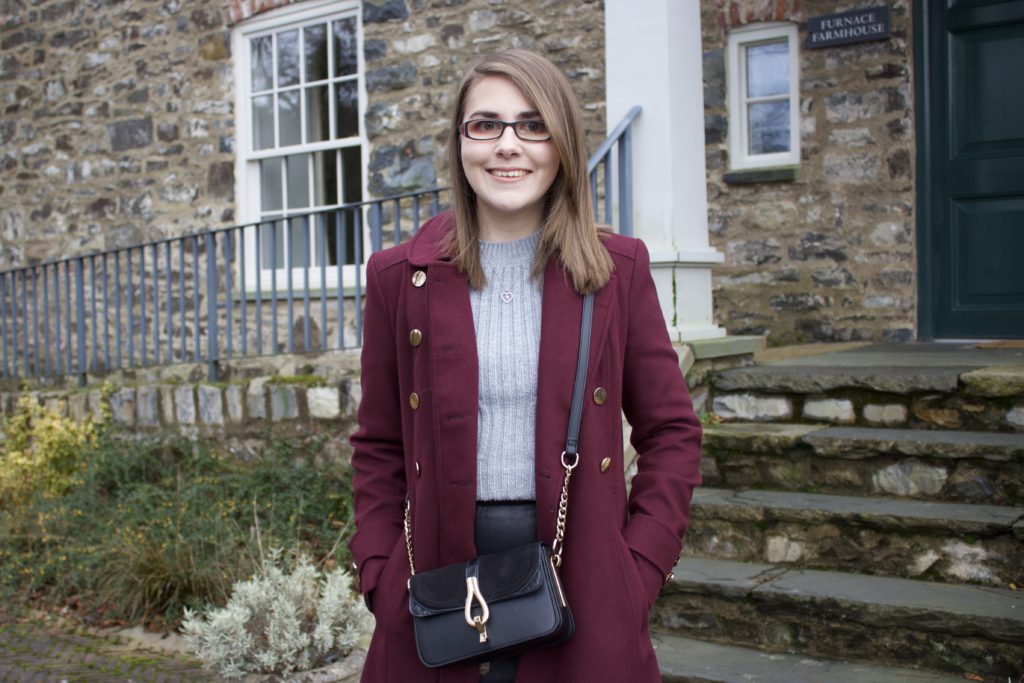
Elin Williams is the inspiring young woman behind the award-winning disability and lifestyle blog, My Blurred World. She was named as one of the most influential disabled people in the UK in 2018, and one of the BBC 100 Women in 2020.
She’s been in love with fashion since she was a little girl and her visual impairment has never stopped her. At the age of six, Elin was diagnosed with a degenerative eye condition, Retinitis Pigmentosa (RP). Later, she acquired Myalgic Encephalomyelitis (ME/CFS) as a teenager.
Elin has always known that her relationship with fashion couldn’t be the same as her friends. When she started shopping with her friends, “I realized that there was so much more to fashion than the visual side of things; I started noticing the fabrics, the textures and how clothes made me feel when wearing them, my passion for fashion took off from there”, she said.
According to her, “inclusive fashion means freedom of expression”. That means that fashion is far from being just about what you see. It’s about self-esteem, feeling, and confidence. It’s also about personality and that’s why Elin and so many other inspiring people out there show their audience that it’s important that you feel stylish and love your outfits, despite the disability, skin color, and body size.
“Having inclusivity in such a massive industry is key so that people can embrace their individual style in a way that’s accessible to them. There’s definitely a misconception that vision-impaired people – or with other disabilities as well – can’t love fashion because it’s such a visual concept, but it goes much deeper than that. Inclusivity is about recognizing that, embracing it, and making fashion easily accessible to those who want to be a part of it”, Elin says.
Fashion for the Disabled: Changes Are A Must
First of all, the fashion industry needs to understand that embracing disability means thinking about them in every clothing line, not only in seasonal collections. Technology and innovative designers and ideas are showing that there’s the possibility of designing beautiful clothing that can suit everyone.
Adopting a universal and inclusive design means creating products that are useful and, in consequence, helps to improve the social integration of people with disabilities through fashion. To sum it up, this is one step further than adaptive, which means to adjust one product to one’s need. An inclusive garment has inclusivity built into it from the very beginning of the design process.
This universal designed clothing and accessories must incorporate technologies that collaborate with making easier dressing clothes, along with making long-lasting products. The industry needs to understand that the disabled also love fashion and are potential consumers. Therefore, give them the liberty of choosing different, stylish, and beautiful options of clothing.
The fashion industry reflects what happens in society. Therefore, those who are socially and historically marginalized, end up not being represented and included by brands. Take a look at the article on racism and social-washing in the industry and share with us, on our Social Media channels, your thoughts on that.
